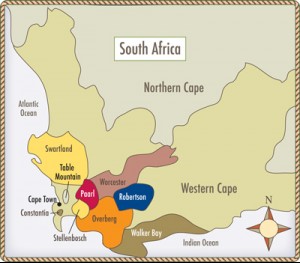
Surface : 131 000 ha
Production : 10 Mhl
Consumption : 3,6 Mhl
Terroir :
Main wine regions
There are two main areas :
Legislation
Legislation is based on 60 appellations (WO=wine of origin), which must contain 100% of grapes coming from the appellation area, which, since 1993, have been grouped into 5 regions: Western Cape, Northern Cape, Kwazulu Natal, Limpopo and Eastern Cape.
Sites :

No winebrotherhood identified as yet